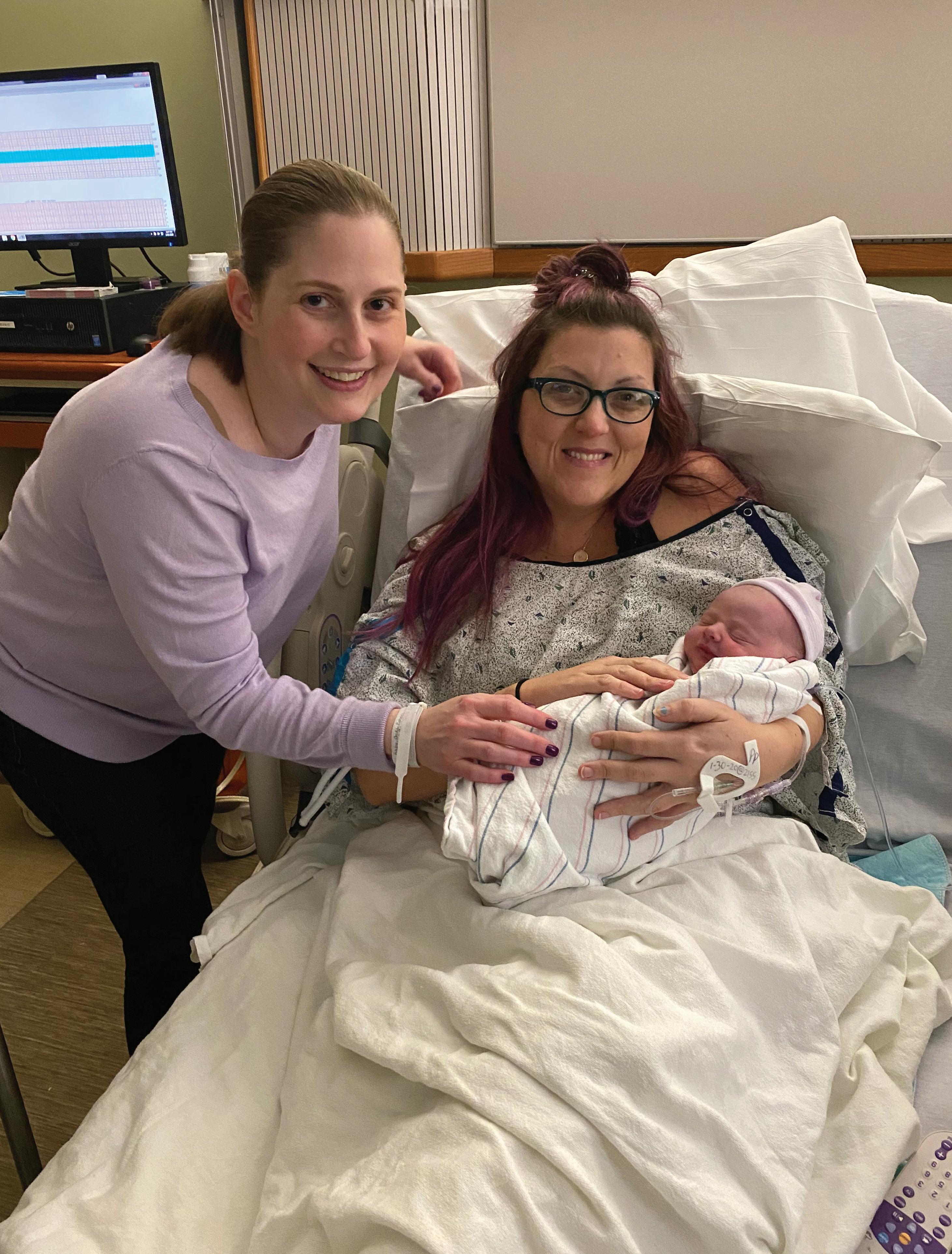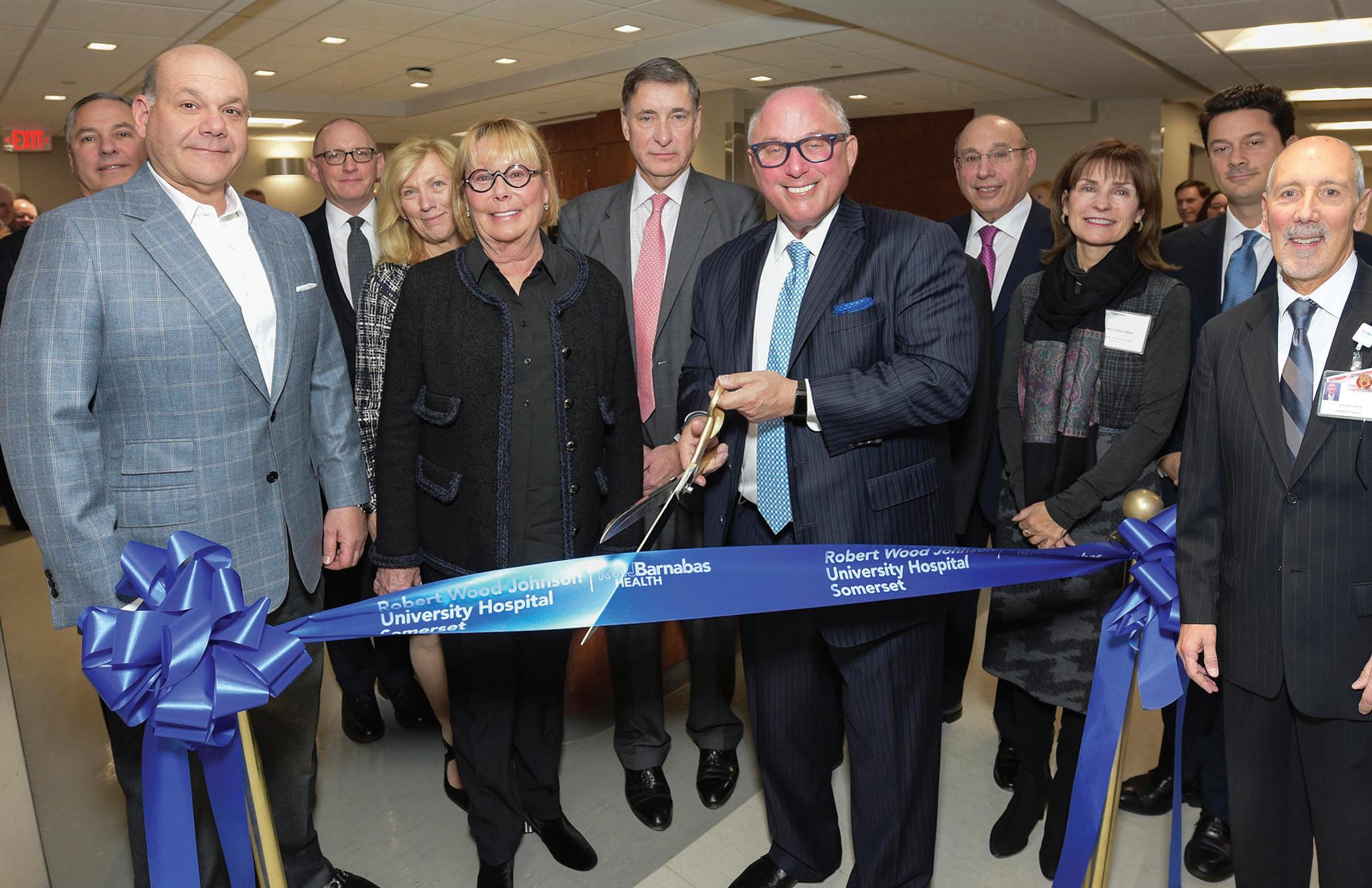
3 minute read
NEW HIPS, NEW LIFE. Joint
NEW HIPS, NEW LIFE
Ron Wyatt is pain-free after bilateral hip replacement surgery.
JOINT REPLACEMENT SURGERY ALLOWED A BUSY PHOTOGRAPHER TO RETURN TO WORK QUICKLY.
Ron Wyatt is always on the go—and rarely without a camera in hand. In his 35 years as a professional photographer, Ron has captured shots of NFL and NBA superstars, the Summer Olympics, the Moscow Ballet and the staff of Robert Wood Johnson University Hospital (RWJUH) Somerset (his work appears regularly in this magazine). No matter the client, Ron is driven by a singular purpose—“getting the image,” he says.
About a decade ago, persistent pain in Ron’s hips began interfering with his ability to keep up with his busy work schedule. One day last fall, he was on assignment at RWJUH Somerset when a staff member noticed he was having trouble walking. Ron told her about his pain and that he was considering hip replacement surgery. “She told me about ‘Dr. K,’” says Ron, 65, of Avenel. “I made an appointment the very next day.”
BENEFITS OF BILATERAL HIP REPLACEMENT
At the appointment, Stephen Kayiaros, MD, an orthopedic surgeon at RWJUH Somerset, examined Ron and diagnosed severe osteoarthritis (OA) in both hips. OA occurs when cartilage, which cushions the hip joint, wears away and allows the bones to rub together, causing pain and stiffness. OA is the most common reason people need hip replacement surgery. Dr. Kayiaros determined that both of Ron’s hips needed to be replaced. Normally, patients with two damaged hips have one replaced, recover, then have the other STEPHEN KAYIAROS, MD replaced later. But when a patient is suffering great pain and disability, Dr. Kayiaros sometimes suggests replacing both at once, a procedure called bilateral hip replacement.
Ron didn’t hesitate when Dr. Kayiaros recommended the bilateral procedure. “It was getting harder and harder to deal with the pain,” he says. In addition, having one procedure instead of two meant Ron would spend less time in the hospital and would miss less work. What’s more, Dr. Kayiaros performs hip replacements using a technique that speeds healing. Instead of operating from the back and cutting through muscles around the hip, which is known as a posterior hip replacement, Dr. Kayiaros uses a newer technique that involves accessing the hip from the front. This procedure, known as anterior hip replacement, requires special training and is more technically challenging, but studies show that it causes far less trauma to the hip muscles. That means patients experience less pain, are discharged from the hospital faster and can stop using a walker or cane sooner than patients treated with the other approach. “Most patients are close to a full recovery by six weeks,” says Dr. Kayiaros.
A QUICK RECOVERY
Ron’s surgery at RWJUH Somerset went smoothly. Afterward, he spent a few days at the hospital recovering in a private room. “The experience was great,” he says. “The room was very nice, and the staff was accommodating.” Ron was particularly touched by one gesture: He’s a huge fan of the tuna sandwiches in the hospital’s cafeteria, and one staff member made sure he got one at a small goingaway party thrown for him and several other patients on discharge day.
At home, Ron spent a few weeks working with a physical therapist, whom he credits with helping him get up and around quickly. He was back to work a month after his surgery, which allowed him to take on an assignment he had long sought: photographing the 2020 Honda Battle of the Bands Invitational Showcase, which features marching bands from around the nation. “I’m not in pain, and I’m walking without any problems,” says Ron, who is effusive in his praise of Dr. Kayiaros. “My care was first class.”
GOOD NEWS ABOUT RECOVERY
Up to one in four patients who receive an artificial hip eventually need the other one replaced, too. Many surgeons are reluctant to replace both hips at once, believing that the recovery can be challenging. However, research shows this may not be the case. Stephen Kayiaros, MD, an orthopedic surgeon at Robert Wood Johnson University Hospital Somerset, and several colleagues conducted one of the first studies comparing patients who undergo bilateral hip replacement with those who have a single hip replaced. Their study, which was published in The Journal of Arthroplasty, found no difference in the number of days patients in the two groups were hospitalized or their speed of recovery after discharge. The best candidate for a bilateral hip replacement is a healthy person younger than 80.
For more information about orthopedic services, visit www.rwjbh.org/ortho. For a physician referral, call 888.724.7123.










